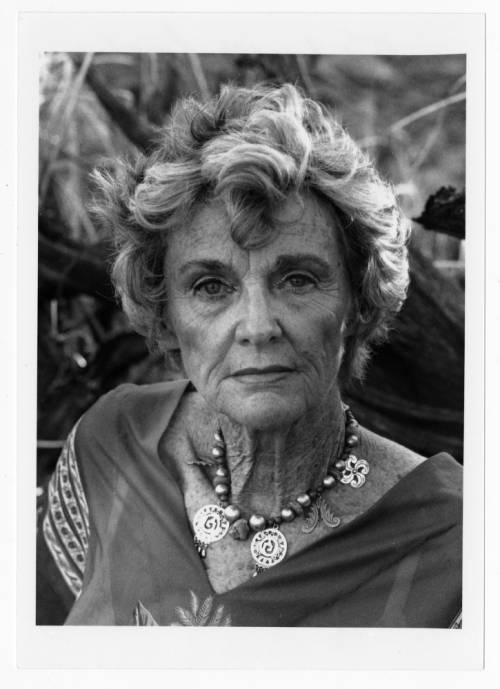
Photo Courtesy: ML Lincoln
Special Collections and Archives is proud to announce that Katie Lee was just selected as a member of the Arizona Women’s Hall of Fame. As many of you know, Katie passed away on November 1, 2017 at the age of 98. During her life, Katie was passionate about many things but the preservation of the Colorado River and Glen Canyon were closest to heart. Floating on the Colorado River through Glen Canyon was where and how Katie decompressed from the noise of life, reconnected with the Earth, and found a quiet peacefulness.
The timing of this award is perfect, as the department’s current exhibit, Full Circle: the Life and Legacies of Katie Lee, celebrates Katie’s many accomplishments and work to preserve the beauty of the Southwest. Katie Lee was many things…she was an actress, writer, musician, environmental activist, world traveler, cowgirl poet, world-class cusser, and an inspiration to anyone who knew her or has been exposed to her. To give you a better sense of who Katie was and how she continues to inspire and influence us, I would like to share a few excerpts from her nomination to give you a sense of her contributions to the state of Arizona and beyond.
Although Katie Lee was born in Illinois, her family moved to Tucson, Arizona, when she was still an infant. Katie was raised in Tucson and considered Arizona her home throughout her life. Katie lived 76 of her 98 years in Arizona. Katie frequently spoke fondly of her formative years in Tucson and the impact of tramping around and hiking in the Sabino Canyon area had on the rest of her life. Following Katie’s graduation from high school in 1937, she attended and graduated from the University of Arizona in 1943 with a bachelor’s degree of fine arts in drama. She left Arizona in 1948 to pursue careers in acting and folk singing, but frequently returned during the summers to enjoy the Colorado River, Grand Canyon, and most importantly, Glen Canyon.
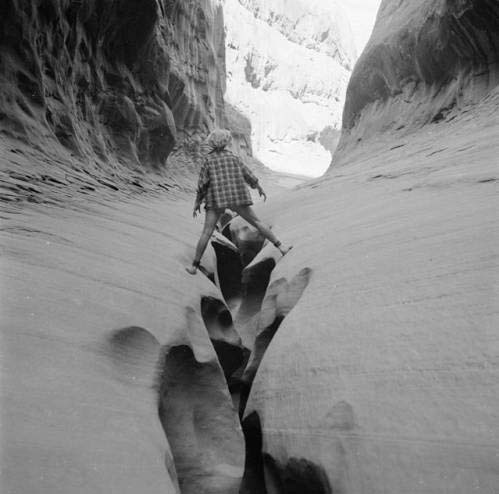
Photo courtesy: Tad Nichols Collection
Katie considered Glen Canyon and the Colorado River to be her lifeblood, a place where she would re-energize herself physically, emotionally, and spiritually. She, along with Tad Nichols and Frank Wright, would float leisurely down the river, exploring the inner canyons and tributaries. Katie wrote several songs and books about these experiences. When the United States Bureau of Reclamation announced its plans to dam the Colorado River and flood Glen Canyon, Katie refocused her passion and energy toward protecting and preserving Glen Canyon and the Colorado River. Katie, Edward Abbey, Martin Litton, and David Brower fought for several years to prevent Glen Canyon from being dammed and flooded. Ultimately, they were not successful and all four of them considered the damming of Glen Canyon to be their greatest failure. Katie never stopped advocating for the protection of rivers, canyons, and wild spaces. She spent the next 51 years using her music, writing, and influence to raise awareness of the preservation of natural places. The loss of Glen Canyon served as a painful example of how something so fragile and beautiful could be destroyed in the name of progress. In her later years, Katie encouraged people to fight for the things and places they love.
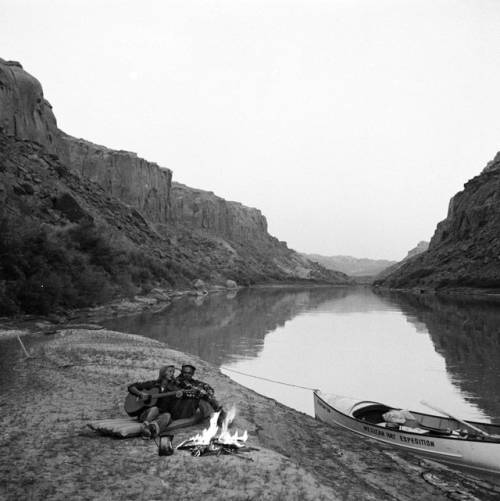
During her life, Katie was recognized for numerous achievements. In the 1940s and early 1950s, she was an actress in popular movies; in the 1950s and 1960s, she transitioned to becoming a folk singer/song-writer and river runner; and in the 1970s until the end of her life she was an author of non-fiction and fiction. Ultimately, Katie is remembered more for a failure than a success. Katie, along with others, fought to prevent Glen Canyon Dam from being built and flooding the Edenesque Glen Canyon. Katie and her like-minded friends were not successful. The dam was built and Glen Canyon was submerged. Her triumph is how she responded to this failure. Others may have walked away from this loss wounded and defeated. The loss of Glen Canyon strengthened Katie’s resolve to fight against federal and commercial interests over the preservation of natural places. From 1962 until her death, Katie fought like a warrior with her words and music to inspire people to prevent additional injustices from occurring, and she never stopped fighting to have the Glen Canyon Dam eradicated. Katie’s passion and plucked served as an inspiration to others, especially women, to battle and advocate for nature’s beauty. This is particularly true of Arizona’s unique natural beauty, which continues to be under attack by commercial and political entities.
Even after her passing, Katie continues to inspire a new generation of environmental activists with her archival legacy. Her archives are housed at the Cline Library on the campus of Northern Arizona University, not far the areas she loved most – Jerome, her adopted home, and the Colorado River, the river that ran through her. Her archival legacy serves as a memory of a place long ago buried, never to be seen again as it was, and a sobering reminder to protect and fight for those places.
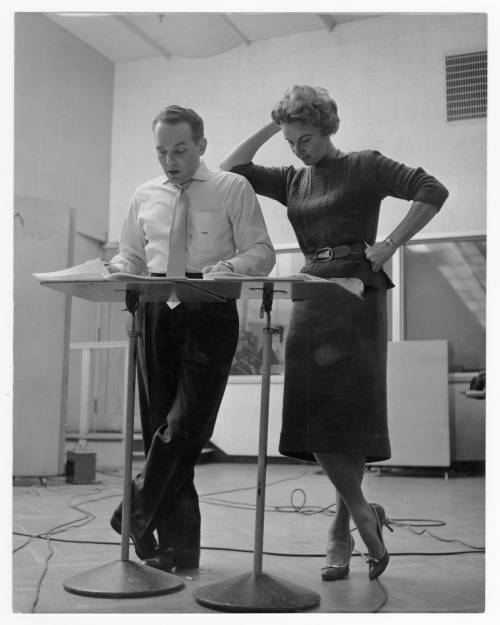
Photo Courtesy: Chuck Stewart
In the short time that Katie’s collection has been at NAU, it has inspired numerous students and community members to use it for academic and creative purposes. For example, Katie’s collection was used by several young women in the Grand Canyon Semester course as a cornerstone for their final projects; beyond NAU, a young, female singer/song-writer, Jessica Larrabee, wrote and sang a song that was inspired by Katie Lee titled “Coyote;” a graduate student from the University of Wyoming used Katie’s music in his thesis documentary film about the environmental impact of Glen Canyon Dam; and documentary film maker, Tyler Graham, was inspired by Katie to kayak the length of “Glen Canyon” in 2018 to raise awareness of the loss of the Glen Canyon. These are just a few examples of how Katie’s legacy of environmental activism continues to inspire a new generation to preserve the natural beauty of Arizona.

Photo Courtesy: BB Island
Near the end of her life, Katie would frequently rhetorically ask, “Why are people interested in what I have to say?” The reason was aptly put by another environmental activist and writer, Craig Childs, “Katie Lee speaks for the canyons and the sweet desert recesses. She is our foul-mouthed, lightning-eyed, boot-stomping balladeer, a character Louis L’Amour never could have invented. Born from the rock itself, she is a lifetime of experience on this wild, restless, cradling ground. If you want to know this place, you need to know Katie.” Katie’s life and achievements are very much a part of this “wild, restless, cradling ground” and the cultural, historical, and natural landscape of Arizona.
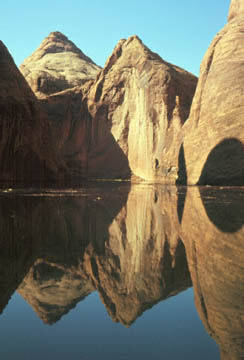
Photo Courtesy: PT Reilly Collection
Katie Lee lived a life passionately, fully and with purpose. Regardless of the area of her life she was involved with, she did so with verve and zest. Today too many people are willing to compromise to achieve a fraction of their goal; Katie approached environmental activism as a personal crusade with total commitment and without compromise. Katie Lee embodied many of the qualities and characteristics that Arizonans embody, she was strong, fierce, intelligent, creative, hard-scrabbled, and resourceful.